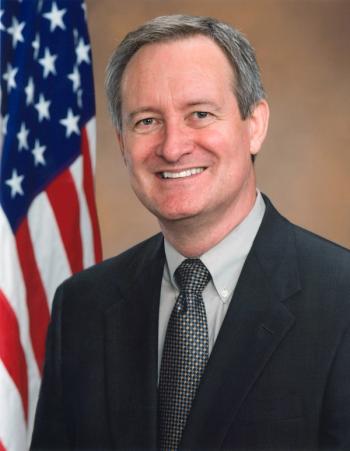
Prime Therapeutics’ analysis of claims data suggests patients require support to ensure continued use and lifestyle modification.

Prime Therapeutics’ analysis of claims data suggests patients require support to ensure continued use and lifestyle modification.

Opill will be available in stores and online in the first quarter of 2024.

About half of Navitus’ commercial clients saw a drug spend decrease compared with 2021.

Governor Phil Murphy has signed three pieces of legislation that would require PBMs to use prescription drug rebates to lower premiums and out-of-pocket costs for consumers and prevent the practice of spread pricing.

This week, the FDA granted full approval to the Alzheimer’s drug Leqembi, set an action for review of zolbetuximab to treat gastric cancers and rejected Amneal’s new drug application (NDA) Parkinson’s disease treatment.

Most of the Humira biosimilars are available with two pricing options. Of the larger PBMs, only Optum Rx so far has weighed in on a coverage decision.

Approvals this week include: a $2.9 million gene therapy for hemophilia A; a pediatric growth hormone; the first cell therapy for type 1 diabetes; a new alopecia drug; a therapy for generalized myasthenia gravis; and full approval for Blincyto in B-cell ALL. The agency also rejected a higher dose of Eylea and set an action for hemophilia B gene therapy.

BioMarin is offering an outcomes-based warranty that will reimburse payers up to 100% of the cost if a patient does not respond to Roctavian.

Sarah Emond will continue with ICER’s efforts to assess drug cost-effectiveness and health plan access policies that began with founder Steve Pearson, M.D., who will transition to an advisor role in 2024.

The National Alliance of Healthcare Purchaser Coalitions has issued a playbook to help companies navigate what they see as a flawed PBM contracting model and lack of competition.

The FDA’s approvals this week include: a $3.2 million gene therapy, the first anti-inflammatory drug for cardiovascular disease, a subcutaneous version of Vyvgart for myasthenia gravis and Jardiance and Synjardy for kids with type 2 diabetes. Three rejections by the agency include: a therapy for NASH, for retinal cancer, and for rare fungal infections. In addition, Geron has submitted an NDA for first-in-class therapy for MDS.

Optum Rx will include the three biosimilars on its standard formulary at parity with Humira.

Employers and plans need to prioritize clinical efficacy over drug price, look for price reductions — and not rebates — on biosimilars, and advocate for a public option to cover gene therapies. These are just a few of ideas that consultant Alex Jung put forward at a meeting of the Midwest Business Group on Health.

New analyses shed light on decreased hearing in people with Graves’ disease and thyroid eye disease.

PBMs have imposed accumulators and maximizers to counteract pharma’s copay assistance programs. Drug manufacturers have retaliated by reducing the amount of patient assistance available.

The FDA has approved a second bispecific antibody to treat patients with diffuse large B-cell lymphoma, as well as Linzess to treat children with constipation. Additionally, an FDA advisory committee recommends approval of Sanofi/AstraZeneca’s RSV vaccine for infants.

If passed, PBMs would not be able to charge fees that are connected to the price of a drug, discounts, or rebates.

Ozempic, Wegovy and other GLP-1 drugs present a challenge to payers in terms of costs and outcomes, finds PSG’s new Drug Benefit Design Report.

SmithRx will offer Yusimry through Mark Cuban’s online pharmacy for $569.27, and members will be able to apply their insurance benefits.

More than 90% of cancer centers have experienced shortages of critical drugs. Erin R. Fox, Pharm.D., University of Utah Health, talks about why these shortages are happening and efforts that are being made to address them.

The FDA has made three approvals this week: a novel drug for dry eye disease, a new indication for Prevymis to prevent CMV disease in adult kidney transplant recipients, and another prostate cancer indication for Lynparza. The agency has also set target action dates for the first CRISPR gene edited therapy and a supplement indication for Jemperli for earlier treatment of endometrial cancer. Additionally, Janssen submitted sBLA for Carvykti for early treatment of myeloma.

The FDA has approved two novel therapies for patients with dry eye disease: Vevye (previously CyclASol) is a water-free, preservative-free solution, and Miebo, which address the excessive tear evaporation that is seen with dry eye.

Exagamglogene autotemcel is being evaluated for patients with sickle cell disease and beta thalassemia, in which a patient’s own hematopoietic stem cells are edited to produce high levels of fetal hemoglobin in red blood cells.

Renee Rayburg talks about how paying for specialty drugs continues to be a top concern for both health plans and employers.

The median annual cost for new oncology medicines launched in 2022 was $260,000, up from $63,534 10 years ago, an IQVIA report finds.

Inpefa (sotagliflozin) added 0.39 quality of life years at an incremental lifetime cost of $29,449 for an incremental cost-effectiveness ratio of $75,510 per quality-of-life year gained, according to the study that was sponsored by the drug's maker, Lexicon Pharmaceuticals.

In an analysis, researchers determined that Inpefa is cost-effective at commonly accepted willingness-to-pay thresholds in treating patients with heart failure who have diabetes.

Over the last five years, both PBMs and drug manufacturers have implemented restrictions that put more of the costs for specialty medications on patients.

Members of the Senate Finance Committee want to modernize the rules around PBM business practices to lower out-of-pocket costs and increase competition.

If approved, Perrigo’s Opill could be the first-ever nonprescription birth control pill.